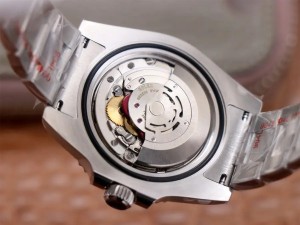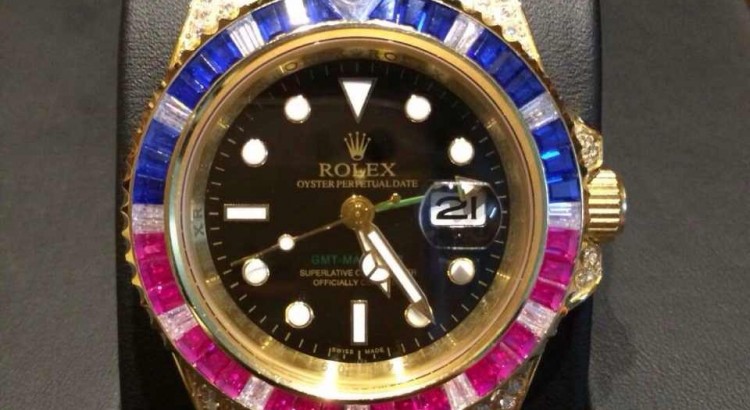There was an era when glimpsing a Rolex beneath a cuff signaled arrival – a silent proclamation of success. Today, that gesture feels less like a statement and more like a scripted scene from a tired play. 
During a recent brunch, a friend eyed my wrist, adorned with a lesser-known independent watchmaker’s creation, and recoiled as if I’d paired a tuxedo with sneakers. “What is that?” he asked, his tone dripping with disbelief. His reaction, more revealing of his own biases than any flaw in my replica watch, crystallized a growing disillusionment: watch culture, once a celebration of craftsmanship and individuality, has devolved into a parade of conformity. When did luxury become synonymous with uniformity? Why do we chase the same Submariners and Daytonas that clutter Instagram feeds and airport lounges like mass-produced accessories?
Consider the “Green Submariner Incident.” My local authorized dealer recently dangled one before me – a piece that would’ve once quickened my pulse. Instead, I felt nothing. Not a frisson of desire. The watch itself remains a marvel of engineering, but its ubiquity has stripped it of allure. When a watch transitions from personal treasure to predictable status symbol, it becomes less an heirloom and more a uniform. 
This isn’t to dismiss replica Rolex entirely. Certain models – the Everose Daytona, for instance – still stir admiration. Yet even the green Submariner’s resale potential couldn’t tempt me. Watches, to my mind, are companions, not commodities. They’re akin to a well-loved leather jacket: meant to weather years, not flip for profit.
Ah, profit – the siren song luring many into horology’s rocky shores. Let’s demystify the myth: unless you’ve stumbled upon a pre-hype Patek Philippe or a vintage Paul Newman Daytona (acquired before its ascent to six-figure absurdity), treating watches as investments is folly. The resale gauntlet – populated by lowballers, consignment sharks, and the ever-lurking specter of counterfeits – is a minefield. My own Daytona, purchased for five figures decades ago, now commands ten times its original price. But liquidating it? Prepare for months of tire-kickers haggling over scratches invisible to the naked eye, or surrendering a hefty slice to grey-market middlemen. Speculation, not strategy, governs this game.
Then there’s the cultural baggage. Rolex’s dominance has birthed a peculiar snobbery, a hierarchy where alternatives are dismissed as also-rans. Wearing a Chopard Alpine Eagle recently, I endured side-eye from a acquaintance who might as well have muttered, “Plebeian.” His own wrist? The same Submariner half the room sported. It’s the horological equivalent of scoffing at a Bordeaux while clutching a mass-produced Cabernet – a performative flex devoid of discernment. 
Dare to venture beyond the Crown, however, and horizons expand. Independent brands like F.P. Journe and Grönefeld craft mechanical poetry for those weary of algorithm-driven designs. Cartier’s Santos, with its Art Deco bravado, or the Tank LC’s geometric purity, exude a sophistication fake Rolex seldom matches. Jaeger-LeCoultre’s Polaris – a sleeper hit with its textured dial and vintage lume – offers understated elegance, while Grand Seiko’s Spring Drive technology melds quartz precision with mechanical soul, its zaratsu-polished cases catching light like samurai blades.
For those with deeper pockets, A. Lange & Söhne’s Saxon craftsmanship – hand-engraved balance cocks, honey-gold movements – redefines luxury, while Vacheron Constantin’s Patrimony whispers refinement without shouting for attention. Even Breitling’s Navitimer, downsized to contemporary proportions, remains a pilot’s icon.
Perhaps I’ve grown jaded. Or perhaps I crave what luxury once promised: singularity. My grail now isn’t a trophy to flaunt, but a story to live – a mechanism that sparks joy not through logo recognition, but through whispered details: the click of a bezel, the dance of a rotor, the way light fractures across a hand-guillochéd dial. 
So if you’re eyeing your next watch, pause. Ask not what others will recognize, but what resonates. The truest flex isn’t a badge; it’s the quiet confidence of a choice ungoverned by herd mentality. After all, time is too precious to let others dictate how you wear it.
